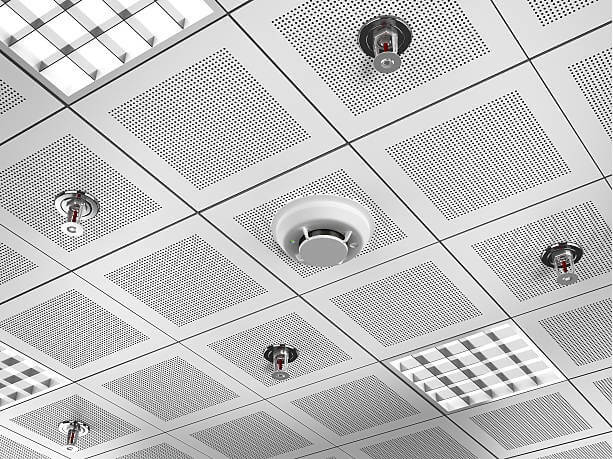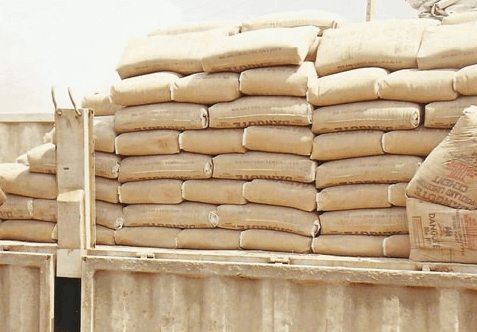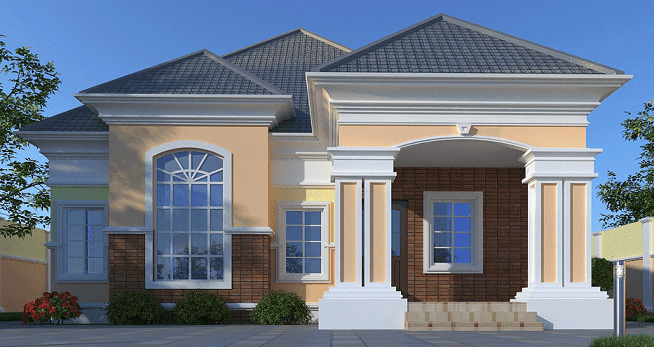Suspended ceilings are also known as dropping or secondary ceilings. They are called suspended because they hang from the roof or structural floor slab above. This kind of ceiling is used more in commercial buildings because of its ability to conceal wires and other installations.
How much do suspended ceilings cost in Nigeria? You need to continue reading to find out the answer to this question. We will also discuss other important facts about suspended ceilings. Let’s begin.

Cost of Suspended Ceiling in Nigeria
Suspended ceilings are used in buildings like schools, offices, hospitals, industrial units, and retail stores. Most people are beginning to use them for residential buildings as well, especially in kitchens.
An important question to answer is how much these ceilings cost in Nigeria. You need the answer to this question to prepare a workable budget for your construction project. We understand this and took it on ourselves to run a market survey on your behalf. After researching both online and offline markets, we have come up with the price list below:
- Gypsum board water and fire-resistant suspended ceiling: N2,800 – N3,300 per square meter
- PVC extra-strong suspended ceiling (bundle of 10): N19,500 – N21,000
- Fire resistance suspended ceiling: N3,000 – N4,000 per square meter
- POP Suspended Ceiling with grids: N4,500 – N5,200 per square meter
- Spanish white suspended ceiling (600 by 600 mm): N4,900 – N5,500 per square meter
- Plasterboard suspended ceiling: N6,500 – N7,300 per square meter
Note that these are the broad categories of suspended ceilings on the Nigerian market. Also, there is a possibility that the prices might change when you visit the market. This could be a function of your location, the vendor, or the prevailing market forces at the time of your purchase. Now that you know the prices of these ceilings, let’s discuss other important facts.
How to Install Suspended Ceilings
Suspended ceilings don’t just add beauty to a building, they perform several functions. After purchasing these ceilings, installing them is the next step. The question that begs an answer here is, how do you install suspended ceilings?
To begin with, you must first figure out the dimensions of where you need to install the ceilings. The dimensions you get will help you to design the grid for the suspended ceilings accurately. After you get the dimensions, you need to figure out the drop of the suspended ceiling. When you do this, you can measure the perimeter of the room accurately.
What is the reason why you must measure and mark the drop of your suspended ceiling before fixing it? It is so that you don’t get any unpleasant surprises after fitting the ceiling grid.
The next step is to hang the suspended ceiling from a bracket. This bracket is usually fixed to the base of the structural slab. It supports the different interlocking metal parts that make up the grid. Beams can also be used for the process instead of a grid. In this case, the ceiling tiles lay between parallel beams.
After fitting the grid, you can then install your air conditioning, lighting, speakers, and other accessories. When you are done with this stage, you lay the ceiling tiles within the pre-created frame. As you have seen from our list above, there are different types and designs of suspended ceilings.
How to choose Suspended Ceilings for your Building
Choosing from the wide variety of suspended ceilings is a very difficult process. One mistake and you may need to pull down the ceilings and make a new purchase. This is not cost-effective and will also sap your energy and effort.
This brings us to the question, how do you choose suspended ceilings for your building? There are several factors to consider. We have listed some of them below:
- Ceiling thickness.
- Ceiling size.
- Aesthetics
- Hygienic requirements.
- Fire separation.
- Corrosion resistance.
- Moisture resistance.
- Thermal insulation.
- Cleaning requirements.
- Ability to incorporate fittings.
- Acoustic absorption and attenuation.
Put all of these and more into consideration, and you should get the best ceilings for your building.
Benefits of installing Suspended Ceilings
Why should you invest in suspended ceilings? Here are a few benefits of installing suspended ceilings:
- Smooth and clean finish to improve the beauty of a building.
- Improves the light quality in a room.
- Ease of access to the roof when necessary.
- Safety




